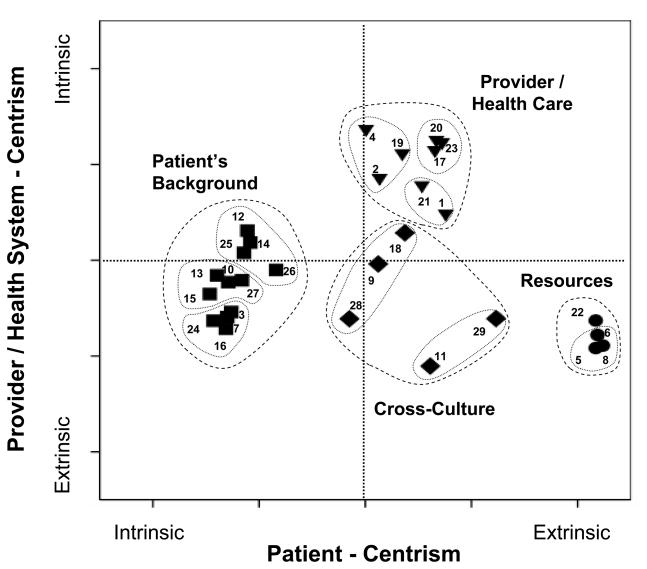Figure 2.
Representation of ideas, “families,” and “neighborhoods” to include in a cultural competence curriculum. The x-axis is a dimension of patient centeredness (Patient Centrism) with a neighborhood of issues more intrinsic to the patient (Patient’s Background, on the left side of the figure) and a neighborhood of issues more extrinsic to the patient (Resources, on the right side). Similarly, the y-axis is a dimension of health-care centeredness (Provider and Health- System Centrism) with a neighborhood of issues more intrinsic to health care (Provider/Health Care, on the upper portion of the figure) and a neighborhood of issues more extrinsic to health care (Resources and Cross-Culture, on the lower portion of the figure). “Resources” stands for resources to manage cultural diversity (translator guides, Instructions, and community resources). “Cross-Culture” indicates such things as idiomatic expressions and examples of effective communication. For the statements of the ideas (1–29) see Table 1.

